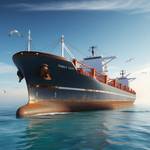Maritime Piracy in Southeast Asia
Maritime piracy in Southeast Asia has been a persistent and complex issue with deep historical roots and contemporary relevance. This region, characterized by its extensive coastal areas, strategic maritime routes, and bustling trade activities, has frequently been targeted by pirates. The issue of piracy in Southeast Asia presents economic, security, and governance challenges that require regional cooperation and coordinated efforts.
Historical Context
Southeast Asia has long been plagued by maritime piracy, dating back to the age of early maritime trading networks. Historical records from the 14th century indicate that pirate activities were a common threat to merchant ships sailing through strategic points such as the Malacca Strait, the South China Sea, and the Sulu Sea. Traditional pirates, often operating out of hidden bases in the archipelagic regions, preyed on commercial vessels, exploiting the dense maritime traffic and the challenging geography of the region.
Present-Day Piracy
In the modern era, the nature of maritime piracy in Southeast Asia has evolved, but its impact remains significant. According to the International Maritime Bureau (IMB), Southeast Asia continues to be a hotbed for pirate activity, accounting for a substantial proportion of global pirate attacks. These attacks range from petty theft and hijacking to more sophisticated operations involving the capture of cargo, crew kidnappings, and ransom demands.
The Malacca Strait, one of the world's busiest shipping lanes, along with the Singapore Strait, continues to be a focal point for piracy, primarily due to the high volume of commercial traffic and the narrow waterways, making it difficult to secure. Other hotspots include the waters off Indonesia, the southern Philippines, and the South China Sea, where disputed territorial waters add complexity to anti-piracy efforts.
Contributing Factors
Several factors contribute to the persistence of maritime piracy in Southeast Asia:
Geographical Complexity: The region's extensive archipelagos, narrow straits, and dense shipping traffic provide ideal conditions for ambushes and quick getaways.
Economic Disparities: Poverty and limited economic opportunities in coastal communities drive individuals towards piracy as a means of livelihood.
Weak Law Enforcement: The vast and porous maritime borders pose immense challenges for effective patrolling and law enforcement, often resulting in insufficient security measures.
Political Instability: Insurgent groups and local militias, particularly in regions like the southern Philippines, leverage piracy as a source of funding for their activities.
Fragmented Governance: Jurisdictional overlaps and lack of coordinated policies among nations in the region complicate unified anti-piracy strategies.
Impact on the Region
The consequences of maritime piracy extend beyond immediate financial losses. They disrupt international trade, increase shipping costs due to higher insurance premiums and the need for increased security measures, and pose significant risks to the safety and well-being of crews. Kidnapping and hostage-taking incidents also place considerable emotional and psychological stress on affected individuals and their families.
Economically, countries in Southeast Asia suffer from decreased investor confidence, which can hamper maritime trade and affect GDP growth. Piracy also strains diplomatic relations and necessitates greater defense expenditure, diverting resources away from other critical development areas.
Regional and International Responses
Efforts to combat maritime piracy in Southeast Asia have seen a combination of regional cooperation and international support. The establishment of the Regional Cooperation Agreement on Combating Piracy and Armed Robbery against Ships in Asia (ReCAAP) marked a significant milestone. ReCAAP facilitates information sharing, mutual assistance, and joint efforts among member states.
Naval patrols and coordinated maritime operations, such as the Malacca Straits Sea Patrol (MSSP) involving Indonesia, Malaysia, Thailand, and Singapore, underscore the importance of collaborative security measures. The involvement of international stakeholders, including the International Maritime Organization (IMO) and various naval forces, further enhances the region's anti-piracy capabilities.
The Way Forward
Addressing maritime piracy in Southeast Asia requires a multifaceted approach. Strengthening regional cooperation, enhancing maritime law enforcement capabilities, and promoting economic development in vulnerable coastal communities are crucial. Building mutual trust among nations, establishing comprehensive legal frameworks, and leveraging technology for surveillance and intelligence gathering are pivotal steps towards a sustainable solution.
As global maritime trade continues to grow, the urgency to eradicate piracy from the waters of Southeast Asia cannot be overstated. The collective efforts of regional governments, international entities, and the maritime industry will be paramount in ensuring the safety and security of one of the world's most vital maritime regions.






















